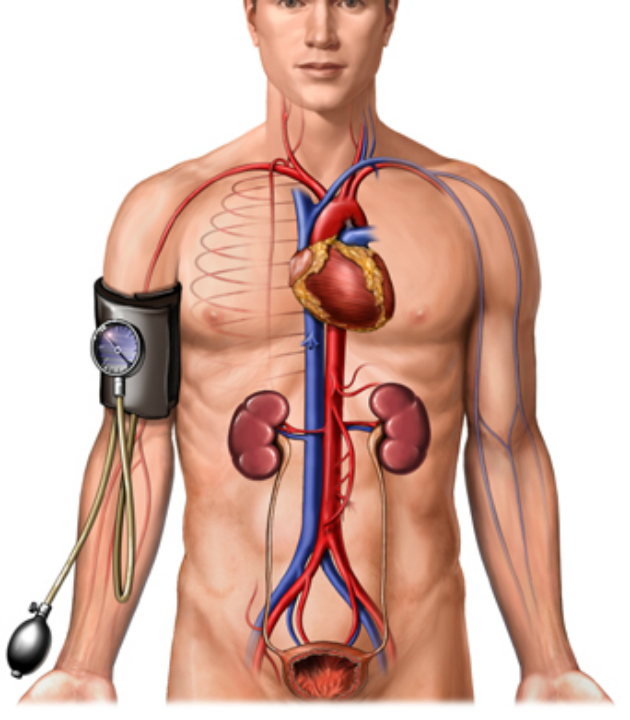The hypotension , commonly known as low pressure , is when the blood pressure is very low, may cause damage to the body.
What is hypotension?
Hypotension is when the body has suboptimal blood pressure, causing blood not to arrive in sufficient quantity throughout the body.
Thus, low pressure means that the person has numbers below 90 mmHg of systolic pressure and 60 mmHg of diastolic pressure, that is, the pressure is less than 9 by 6.
When the pressure is too low, the cells do not receive the oxygen and nutrients needed to maintain the body and the waste is not disposed of properly, which can cause damage to the organs.
Hypotension causes dilation of the arterioles to decrease the resistance of blood flow, which means that the heart is pumping less blood, thus changing the width of the arteries, the heartbeat and the volume of blood in the heart.
Symptoms of hypotension

The most common symptoms presented by those with hypotension are:
- Dizziness or vertigo;
- Blurred or darkened vision;
- Nausea;
- Fatigue;
- Lack of concentration;
- Fainting;
- Shortness of breathe;
- Chest pain;
- Pallor.
In addition to the symptoms presented, blood pressure may decrease according to the position of the body. When the person is standing, blood pressure tends to be higher in the legs and lower in the head; when lying down the pressure is leveled, staying the same throughout the body.
When you get up, your blood pressure also changes and gets lower, because the blood that was in your legs has difficulty getting back to the heart, causing less blood to be pumped.
That is why when you get up it is important to sit down, so that the blood returns to the heart more easily, normalizing the heartbeat.
Causes of hypotension

Hypotension can be caused by several factors, such as:
- Dilation of arterioles
- Caused by serious bacterial infections;
- Consequence of using some specific medications;
- Allergic reactions.
- Heart diseases
- Heart attack;
- Tachycardia (very fast heartbeat);
- Brachycardia (very slow heartbeat);
- Arrhythmia (abnormal heart rhythm).
- Low blood volume
- Dehydration;
- Bleeding.
Treatment for hypotension

The treatment for hypotension may vary according to each person, in which the causes and symptoms presented are taken into consideration. In some cases, the use of specific medications may be recommended, which must be prescribed by doctors.
In general, it is advisable to take some measures that can help restore normal blood pressure.
- Lie in a comfortable position, keeping your head in the same line as your body;
- Raise your feet so that you are higher than your heart and head;
- Ingest water or juice in small sips;
- Avoid going too long without eating.
Types of hypotension
Hypotension can present different types that have their own characteristics. Here are the most common types.
Postural hypotension
Postural hypotension is also known as orthostatic hypotension and occurs after a person has been in a position for a long time and moves suddenly. This sudden movement causes blood flow and pressure to not adapt to the body quickly.
Thus, the recommendation is that the initial position is resumed and the movement happens more slowly and gradually, helping the blood flow and the pressure to reach correctly in all parts of the body.
Mediated neural hypotension
Mediated neural hypotension is very common in children and young people and occurs when communication between the brain and the heart fails. It usually happens when the person is standing for a long time, thus accumulating blood in the legs and contributing to the drop in pressure.
Postprandial hypotension
Postprandial hypotension is more common in the elderly and usually happens after eating food, as blood flows to the digestive system.
Shy-Drager syndrome
Shy-Drager syndrome is a disease of the autonomic nervous system, responsible for controlling heart rate, blood pressure, digestion and breathing.
Gestation
The pregnancy can also cause hypotension, especially between the third and sixth month of pregnancy. The main cause is that in this period the baby is developing and thus, needing blood in the placenta.
